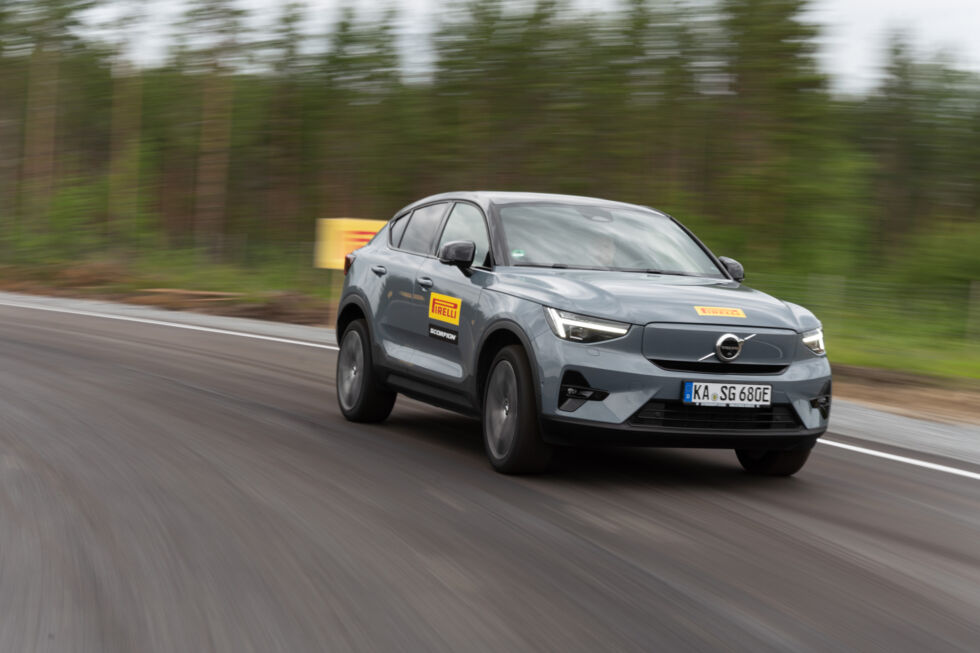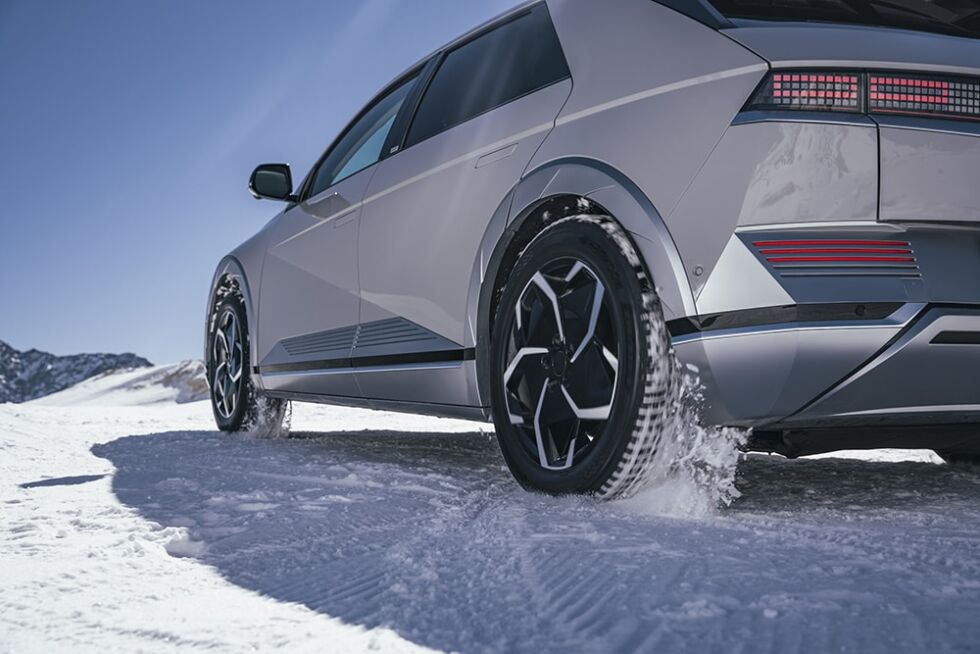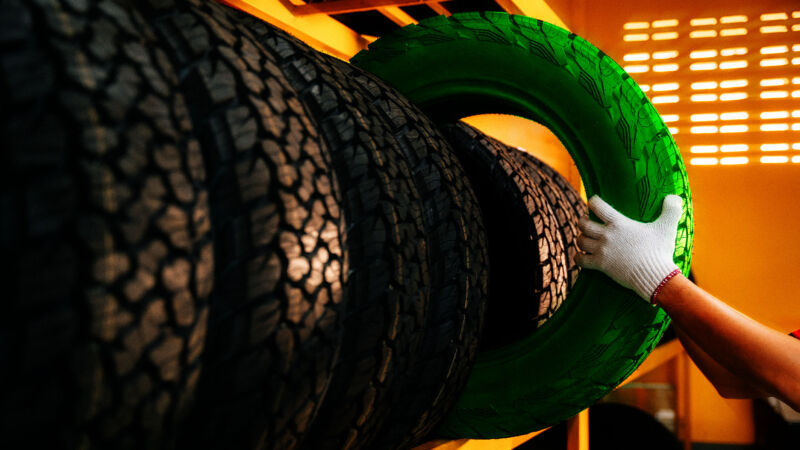The differences between ICE vehicles and EVs go all the way down to the tarmac.
One of the biggest promises of electric vehicles is that they provide relative freedom from constant car maintenance. Gone are oil and filter changes, spark plugs, tune-ups, diesel particulate traps, diesel exhaust aftertreatment fluid, and countless other parts to replace. There's not even so much as a muffler clamp to deal with.
Well, a funny thing happened on the way to petrol-free motoring bliss. The final piece connecting the car to the road is still a tire, and it still flexes. It uses air and needs to be replaced every so often. And the demands a motor places on traction, load, and noise are quite unique if that motor whirs silently. There's no way around it: EVs require EV-specific tires.
How are tires for EVs different? We spoke to several tire companies to better understand what ingredients go into the tire oven in the first place and what development testing has proven before the tires hit the street.
Yes, tires intended for conventional internal combustion engine (ICE) vehicles will fit your EV car's wheels, but using them in this way would be a bad idea. Tires meant for EVs are engineered to withstand the additional weight, dynamic loading, and tractive demands of an EV, among other things. Using non-EV tires will likely result in far more accelerated wear, heat-related issues, and the potential for wheelspin from a rest, which, even with traction control, could conceivably induce a loss of directional stability.
Weight and load
There are some fundamental differences between ICE cars and EVs, even before either car moves. Generally, EVs are heavier than a similarly sized or similarly classed ICE car. For example, the electric Mercedes-Benz EQS 450 4Matic's curb weight is 5,597 lbs (2,539 kg), while the ICE S500 4Matic weighs just 4,610 lbs (2,091 kg). These cars aren't on the same platform, but they hold the same size class and sit in the same general segment. The EV is nearly 1,000 lbs (454 kg) heavier due to the simple fact that batteries weigh a lot. The weight issue will improve over time, but for the near future, the basic construction of the tire carcass must be up to the task of supporting such a heavy load.
Many people think that only a tire's rubber compound or polymers can influence its traction and grip. But in addition to these compounds, the tread pattern, the depth of the tread blocks, and the void volume between them contribute to big changes in a tire's overall stiffness and load capacity.
On the positive side for static load distribution, that prodigious battery weight is often evenly distributed, front to rear, in the EV. Every silver lining has a cloud, though. If that weight were centralized in a far smaller footprint in the middle of the car, it would benefit the car's dynamic mass while braking, cornering, and accelerating. A long, wide battery doesn't help an EV once it's moving and changing direction rapidly. And since the car is a movable beast, the tire's dynamic load capacity must be more than up to the task. That means structural stiffness under that EQS's 5,597 lbs, not just when stationary but while it's braking, cornering, and accelerating.
Noise

Without combustion, EVs have a drastically lower noise floor than ICE vehicles. And not only is there no combustion engine, there's also no transmission, no clacking of a valvetrain, no sound from the exhaust or intake plumbing, not even any faint ticking of high-pressure fuel injectors. The engine in an ICE car drowns out some of the road noise generated by the tires, putting a huge premium on quietness from all components, but especially tires.
Tires begin producing most of the sound emanating from an EV (both to the outside and the inside) once the vehicle is up to many suburban streets' speeds, and the noise only goes up on highways.
Rob Williams, Hankook Tire's senior vice president, told us that in very round numbers, powertrain noise accounts for 50 percent of the total noise heard from an ICE vehicle and that road noise from the moving vehicle accounts for 30 percent. On the other hand, Hankook found that an EV's electric motor noise accounts for just 15 percent, while road noise is 40 percent and wind noise from high-speed driving equates to about 30 percent. The major factor in tire noise at speed is the tire's tread pattern.
Combustion-powered cars have been using active and passive noise cancellation for years, but today, there's much more computer simulation software to work out the design of new and quieter tread patterns over louder ones.
Ian Coke, Pirelli North America's chief technical officer, told Ars that the company developed its own software for this kind of simulation. Before simulation software existed, we learned that you could cancel a lot of tire noise if a tire's tread blocks vary in longitudinal length (or pitch) around the tire's circumference and then alternate between large and small blocks from the inside shoulder to the outside shoulder. The difference today is that with software to do simulations and calculations, many more vastly different designs can be tested in a tiny percentage of the time it took 20 years ago.
Traction under acceleration
Here lies one of the biggest challenges when engineering a tire for an EV. Because most electric motors deliver enormous torque more aggressively and instantaneously than most combustion engines, they send a more significant shock to the tire than nearly any ICE car with a similar design brief can. Almost no combustion car in the same compact hatch/wagon/SUV market zone as the Tesla Model Y, for example, can produce the same immediate acceleration. This puts a much bigger requirement on the performance envelope of the Model Y's tires than just about anything else in the same size class.
However, driving range is also a significant consideration for auto manufacturers and tire companies, not to mention buyers. If a tire delivers exceptional forward traction, long tire life is already compromised to a degree with softer rubber compounds that usually have to sacrifice long durability to deliver that bite at the road surface.
Tire life

Even in the relatively short time frame that EVs have been on the market, some owners have noted a short lifespan on their tires compared to those on ICE vehicles—sometimes drastically so. And that's important because EV customers face a pretty hefty bill to replace their tires, sometimes more than once. A friend of this author just replaced the tires on his Tesla Model S after a mere 4,000 miles due to wear. This balance between long life and traction is even more delicate with tires fitted to EVs than those on ICE vehicles.
Driving range
Electric vehicles require lower rolling resistance from their tires than an ICE vehicle to help maximize the vehicle's driving range, undoubtedly the greatest concern of EV buyers. And EV manufacturers want to capture every last morsel of range possible, which puts much greater importance on energy efficiency from the tires. Low rolling resistance is not new, but it plays a much smaller role for most ICE cars. Pirelli says that the tire's influence on an EV's range is anywhere from 20 to 40 percent, whereas it's between 15 and 20 percent on an ICE vehicle.
Compared to the tires factory-fitted to an ICE car, an EV tire is more rigid. This is the case even down to the tread pattern. But finding the right balance between low rolling resistance and grip, which are often thought of as mutually exclusive, is a balancing act.
Aerodynamic efficiency is also a factor with tires, though it's not often addressed. The frontal area of the tire, as seen by oncoming air, imparts a degree of aero drag, which one can think of as just another form of rolling resistance. Wider tires present more drag, which means lower efficiency, which results in a negative effect on the total driving range.
Cost
An inescapable fact is that EV tires are expensive, and global supply chain issues have only compounded the problem. Each issue above makes tires for EVs more costly than tires for ICE vehicles.
Finally, given all the above, there's a much smaller market for EV-specific tires than tires for ICE cars, so the field is narrower, and there are fewer choices, driving up prices relative to non-EV tires. The good news for EV owners is that the whole field is growing, which should make the collective intelligence and best practices on tires for EVs more widespread.
- Karlston
-

 1
1




Recommended Comments
There are no comments to display.
Join the conversation
You can post now and register later. If you have an account, sign in now to post with your account.
Note: Your post will require moderator approval before it will be visible.